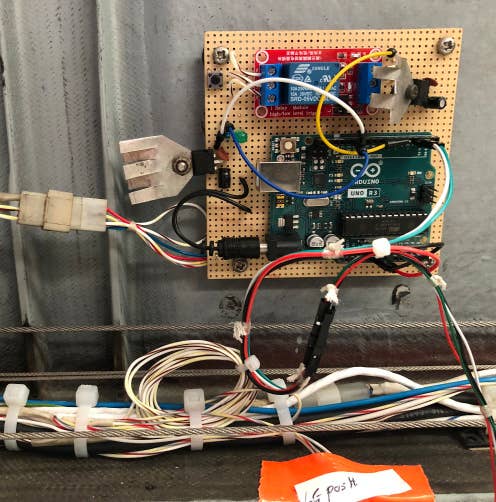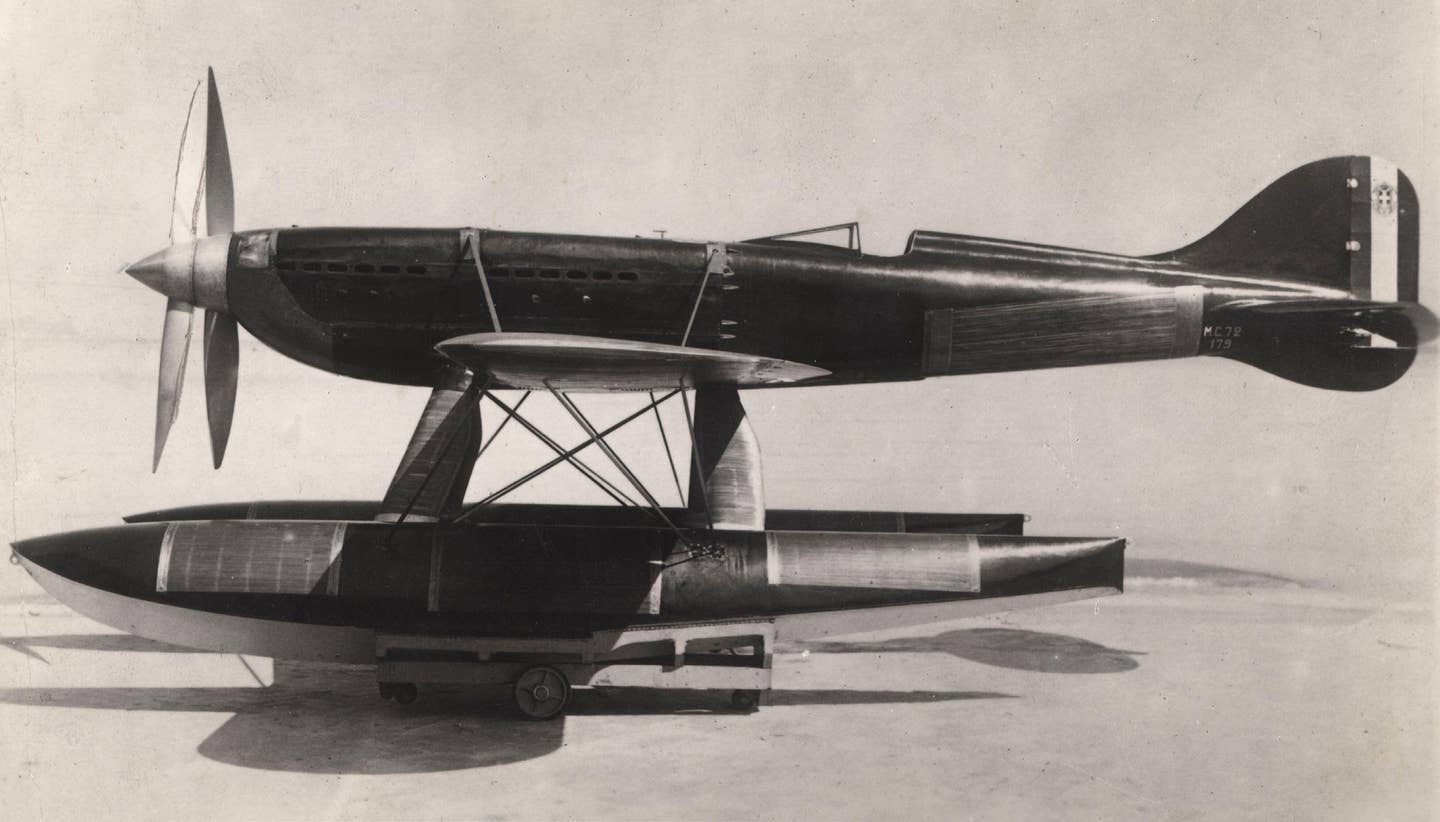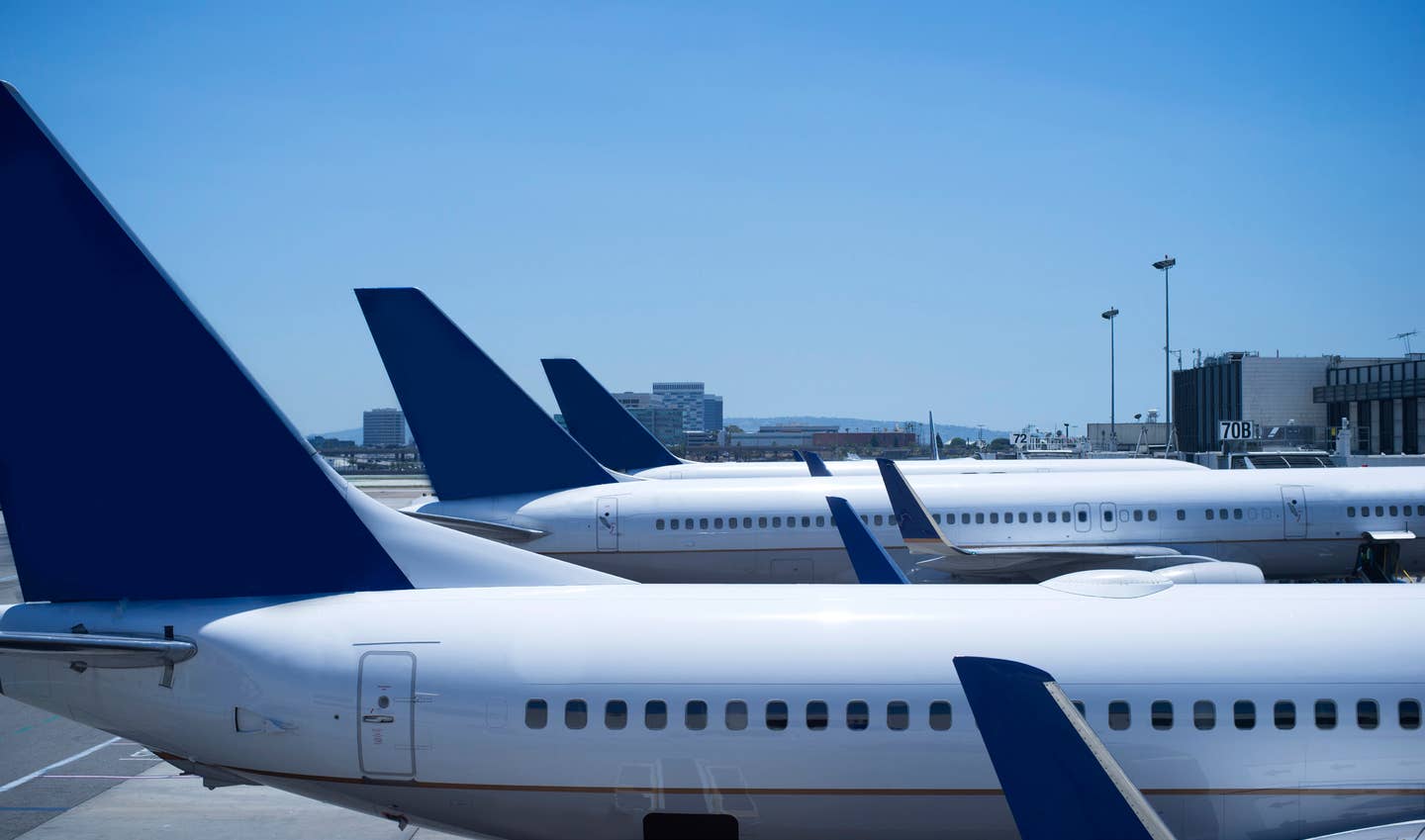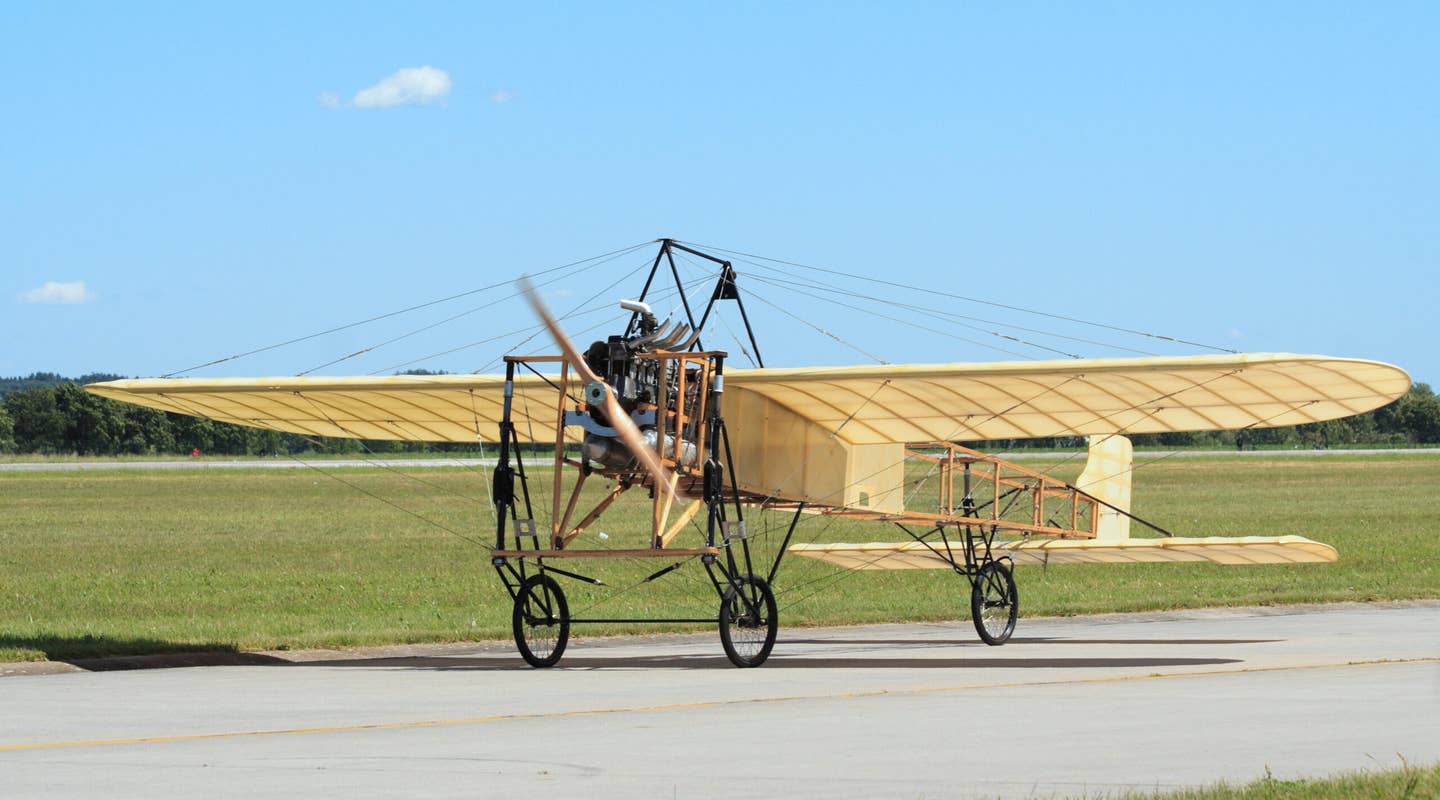Commercial Space Travel Is a Giant Leap for the One Percent
If you can’t afford the ride, stream the video.
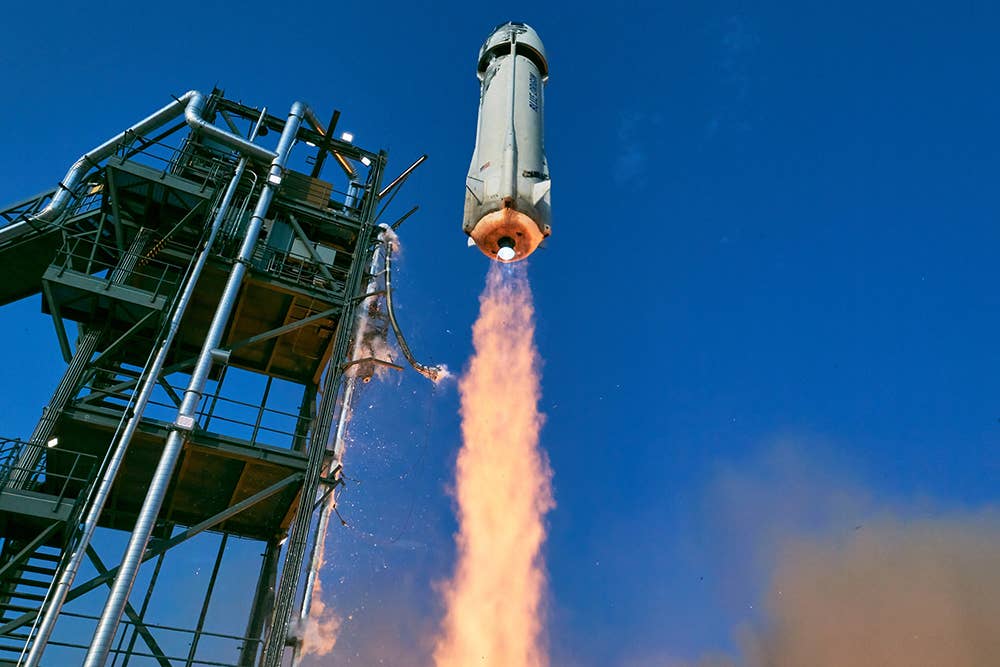
Blue Origin recently completed its 20th spaceflight for the New Shepard missions. [Courtesy: Blue Origin]
We heard a lot in August 2021 about the “edge of space” and the life-changing effects of going to it. But wait a minute—does space even have an edge?
Space is everywhere. It permeates everything, as water does a sponge. In fact, the volume each of us occupies in the world is mostly empty space. What Jeff Bezos, Richard Branson, and their clients went to the edge of was not space, but the Earth’s atmosphere. And of course, the atmosphere does not have a real edge either; it just gradually gets harder and harder to detect.
People realized, way back at the beginning of our spacefaring era, that de-fining the edge of “outer” space—that is, all space that is not within a certain matter-rich sphere, precise diameter to be determined—would be important for jurisdictional reasons. The famed aerodynamicist Theodore von Kármán suggested a value in the vicinity of 60 miles, because at that altitude a winged vehicle could squeeze only negligible lift from the vanishingly thin air. The precise height of the so-called Kármán Line, 100 km or 62 miles, is arbitrary, just a nice round number. In order to make a few of its X-15 pilots into space travelers, the U.S. Air Force created an ersatz “edge” of its own, at 50 miles.
Von Kármán was evidently thinking about air more than space. If he had been thinking about real airlessness, he might have suggested a different boundary, for instance 150 km, or roughly 100 miles. That, in Wikipedia’s nicely phrased definition, is “the lowest altitude above the Earth at which an object in a circular orbit can complete at least one full revolution with-out propulsion.”
Besides “edge,” another word that got a workout last summer was “astronaut.” It means “star sailor”—we are all astronauts, come to think of it, sailing on our watery ship among an infinitude of stars. But a special prestige seems to attach to the word itself, and the FAA was quick to protect it by announcing that only crew members who had some authentic functional part in the execution of a space flight—not just a titular role dreamed up for the occasion—could be called astronauts. Passengers on cruise ships do not get to call themselves deck hands. That seemed to demote Bezos, Branson, and all their passengers, and left Mike Melvill and Brian Binnie—who hand-flew Burt Rutan’s SpaceShipOne above the Kármán Line three times in 2004 to win the $10 million Ansari X Prize—the only remaining serious claimants to the title of “civilian astronaut."
Once you got past the arm-waving and horn-tooting, what was interesting about the dueling spectacles was the difference between their technical approaches. Under the broad rubric of Blue Origin, the Bezos program used a conventional rocket, taking off vertically and coming back down tail-first to alight gently—as rockets now routinely do—on a small target-like pad. The passenger-carrying module, having separated from the booster, returned via parachute with a last-second blast of reverse thrust to cushion its touchdown. This is, with minor alterations, the classical approach that was used by the first space hoppers 60 years ago.
Branson’s enterprise, modestly styled Virgin Galactic, adopts the strategy used by Rutan for SpaceShipOne, and by the X-15 and other experimental rocket planes in the 1950s. A long-wingspan mothership—not named Mary—efficiently lifts the spaceplane to a height of seven or eight miles, where the worst of atmospheric drag is behind it. Released from the mothership, the spaceplane ignites its rocket engine and uses some of its momentum to bend its flight path to the vertical.
The reasons for the respective choices are historical. Rutan designed SpaceShipOne around a so-called hybrid rocket engine, in which a tank of liquefied nitrous oxide or “laughing gas” discharges down a channel in a cylinder of solid propellant, often described as “tire rubber.” His company, Scaled Composites, was making the expendable solid-propellant sections—where the combustion takes place—in house. Everything, as usual with Rutan, was aimed at ingenious simplicity and low cost. Safety too: The mothership and the spaceplane were just two composite homebuilt airplanes—familiar technology put to a new use—and a glitch at any point in the mission was not likely to be fatal. The strategy worked. In 15 flights over as many months, SpaceShipOne went from shop floor to space.
SpaceShipTwo, its lines initially laid down by Rutan but its design detail completed after his retirement, is intended only for suborbital flights carrying a few passengers. Much bigger and heavier than SpaceShipOne, it requires a larger hybrid engine. This type of motor, for all its apparent simplicity, turns out not to scale well.
As a result, the development of SpaceShipTwo took almost as long in years as that of SpaceShipOne did in months; and, at the time of the Branson flight, it was still able to carry only four passengers, not the intended six—and only to 50 miles, not to the Kármán Line. Further-more, shortly after that flight, the company announced a hiatus of at least eight months for “refurbishment” of its seldom-used vehicles. Virgin Galactic has suggested, apparently in a bid to support its stock price, that its technology could be leveraged into hour-long hypersonic transcontinental flights. This is utter nonsense.
I have not seen definite figures on the comparative masses of propellant or the engine thrust required by the Blue Origin and Virgin Galactic systems, but it is certain that the Blue Origin rocket, running for more than three minutes at say, 110,000 pounds thrust, requires much more of both than the Virgin mother/daughter approach does. But while the Virgin Galactic spaceplane was never intended to go much beyond62 miles, Blue Origin’s ambitions are much grander. Despite a later start, I’m sure Jeff Bezos dreams of being on Mars to welcome the arriving Elon Musk.
To show how far he’s surpassed Bezos and Branson, Musk sent four civilians into orbit for three days in September. Reports of a malfunctioning toilet and persistent weightlessness-induced nausea may have given a few starry-eyed ticket-holders pause to wonder whether space tourism was really such a lark as it was made out to be.
The spectacle of unimaginably rich men indulging in what amounts to a street-light drag race to space puts a rather fine point on those familiar statistics about the 100 (or whatever) richest people in the world having as much wealth as everybody else combined. But at least Bezos, Musk, and Branson are spending their money. Whether the cost of a space program is dispensed through NASA or through some private enterprise doesn’t matter to the machinist who lands the contract for a bunch of unattainium widgets.
Despite all the burbling about “the democratization of space,” it looked more like plutocratization to me. One of the first seats on the Bezos rocket went for $28 million. Virgin recently upped the price of a ticket from $250,000 to $450,000. I doubt that the tab for a 100-km rocket hop will ever approach that of a roller-coaster ride. Most of us will have to settle for the video.
But maybe it will be one of those 3D, 360-degree virtual reality things. They’re life-changing.
Editor's Note: This article originally appeared in the Q1 2022 issue of FLYING Magazine.

Sign-up for newsletters & special offers!
Get the latest FLYING stories & special offers delivered directly to your inbox

